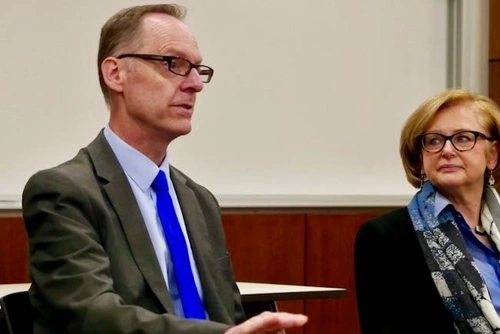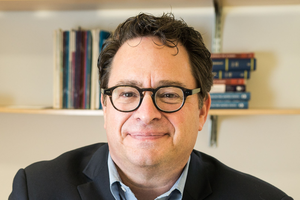Joni E. Finney, Kristin D. Hultquist, Scott D. Pattison, Martha J. Snyder
Sponsored by
HCM Strategists
Institute for Research on Higher Education
at the University of Pennsylvania Graduate School of Education
Summary

During this time of unprecedented economic, health, and social challenges, states must leverage higher education as a strategic asset rather than simply a budgetary expense. Governors should act now to appoint statewide taskforces to provide policy leadership in shaping a long-term, coordinated, and robust strategy for higher education to address twin imperatives: broadening opportunity to those who have been excluded from higher education and propelling the nation and states to higher levels of economic prosperity. The primary agenda for these taskforces should be guided by the First Principles for Strategic Investment in Higher Education 2020. These principles, detailed below, address state investments in colleges and universities geared to recovery; tuition policy and alternative sources of revenue; and the efficient use of facilities. Like visionary state leaders of the past, governors and other state policymakers can position postsecondary education as a strategic asset for educational opportunity that drives economic and workforce recovery and removes systemic inequities that hinder prosperity.
Suggested citation: Finney, J. E., Hultquist, K. D., Pattison, S. D., & Snyder, M. J. (June 2020). A generational challenge: State postsecondary education policies to support economic recovery and individual opportunity. HCM Strategists and Institute for Research on Higher Education at the University of Pennsylvania Graduate School of Education.
Introduction
As governors and other state policymakers turn the corner from managing the COVID-19 health crisis to developing a longer term blueprint for economic recovery, they face historic unemployment levels as well as underemployment of many state residents. These employment issues have only exacerbated existing inequities, particularly for populations of color and other disadvantaged groups. These challenges, coupled with the extensive social unrest in response to persistent, systemic racial discrimination, have put state and local policymakers under increasing pressure for meaningful reform.
These era-defining challenges can be overcome. Previous leaders have steered the nation during times of significant change by strengthening and broadening educational and economic opportunities for Americans. Even as states face an unprecedented combination of challenges, policymakers can position postsecondary education as a strategic asset for educational opportunity that drives economic and workforce recovery and removes systemic inequities that hinder prosperity for all.
Realigning state higher education policies to this important agenda requires a planned statewide approach that considers how higher education policies on finance, governance, and accountability address the challenges of the present moment. With 40 million Americans filing unemployment claims,[1] a primary public goal for higher education is retraining unemployed and underemployed adults and preparing more young and working-age adults—particularly those who have not benefited from the past decade’s economic growth—with the knowledge and skills they need to qualify for stable, well-paying careers. Advancing workforce preparation through certification and degree programs benefits individuals and families and strengthens local, regional, and state economies.
Federal relief, such as the CARES Act allocation of $14 billion to higher education, should be integrated into each state’s strategic planning for and investment in economic and workforce recovery.[2] But these and other federal efforts will not be sufficient.
States must take action now to begin to reach the critically important goals of investing in postsecondary education as a pathway to improving economic opportunity. Furthermore, this action must not perpetuate the inequities that currently exist. Rather, leadership in this time of crisis requires bold action that acknowledges historical barriers and prioritizes supports for the recently unemployed, students of color, low-income individuals, adults, and those populations impacted by COVID-19.
The Value of Appointing a Statewide Taskforce to Help Governors Shape a Coordinated, Forward-Thinking Strategy
In order to develop a coordinated approach while working on other priorities, states will need the support and guidance of diverse civic, business, and education leaders. Broadening the conversation about the future of higher education through more voices, particularly those outside of the education sector, is essential for progress. Toward this end, governors should act now to appoint a statewide Taskforce for Economic Recovery and Individual Opportunity through Postsecondary Education.
These taskforces should be charged with providing policy leadership in shaping a strategy for higher education that is coordinated, robust, and forward-thinking. This work is not a short-term “fix-it” but rather a long-term commitment—one likely to span more than a single election cycle—to realign higher education to improve individual lives through educational opportunity and economic recovery. The individual actions of institutions, while essential, cannot substitute for a long-term statewide strategy.
Each state has its own history, context, and priorities for higher education, but the primary agenda for each state’s taskforce should be guided by the First Principles for Strategic Investment in Higher Education 2020, identified below. States will most certainly add to and adjust this list, but it is crucial that actions be coordinated statewide, rather than ad hoc. The taskforces should be entrusted with broad responsibilities for (1) recommending higher education budgets, including any necessary changes in higher education finance policies; (2) assessing statewide governance to determine whether current governance arrangements are effective in broadening postsecondary educational opportunity and addressing economic recovery; and (3) reviewing or establishing new accountability agreements supported by data systems to monitor progress. Considering the pressures facing state policymakers, anything short of this level of leadership could result in a long-term loss of institutional capacity in higher education, the decay of educational opportunity for millions, and the unraveling of economic opportunities for Americans.
Higher Education as a Strategic Asset
Generation-defining challenges are not new to higher education. The Morrill Act of 1862 provided for the creation of land-grant colleges in the states. These colleges, established nationwide, offered education and training in agriculture and the mechanical arts. About 80 years later (in 1944), the Servicemen’s Readjustment Act, known as the GI Bill, changed both the purposes of higher education and who the nation thought was educable. These major pieces of federal legislation were generational responses that, in the case of the Morrill Act, increased workforce preparation for industries that were growing and changing and, in the case of the GI Bill, broadened college access to new populations of students to prevent massive postwar unemployment.
Like their national counterparts, governors and other state leaders have also leveraged higher education policy in visionary ways to respond to era-defining challenges. Examples include the development of “A Master Plan for Higher Education in California 1960-1975” and “A Master Plan For Higher Education in Illinois” (1966), known as the “system of systems”—two of many far-sighted efforts among the states to address the educational needs of their growing and increasingly diverse populations.[3] This statewide commitment resulted in expanding educational opportunity and increasing workforce preparation, building and restructuring campus systems, and developing a variety of governance models to organize higher education. States also revised their finance policies to fund institutions for these goals and created new data structures to understand their impacts. These early cases show the substantive statewide, coordinated, and forward-thinking work that has already been done.
Both the federal and state actions illustrate the importance of viewing higher education as a strategic asset, particularly in times of immense change, rather than simply as a budgetary expense. The transformational policies that have been implemented during these times tend to address twin imperatives: broadening opportunity to those who have been excluded from higher education and propelling the nation and states to higher levels of economic prosperity.
The focus of this statement, however, is on state policy. States provide the institutional support and develop the public policies that most directly influence educational opportunity and affordability for millions of students. The institutions that serve most students are public and operate under the jurisdiction of state governments.
Toward the end of the 20th century and into the 21st century, state action has been less focused and coordinated.[4] One consequence of weakened state policy leadership has been the inability of states to address the boom and bust cycle of higher education finance that works at cross-purposes in increasing educational opportunity and providing stable and predictable funding.[5] State policymakers tend to tighten higher education budgets during recessions and support public colleges’ and universities’ actions to increase tuition to compensate for reductions in state appropriations. This cycle contributes to the increasing price of public higher education precisely when students and families can least afford to pay for it. The effects can be to constrain educational opportunity when the workforce needs retraining and, in the process, to restrict economic development. It also increases inequities in access by race and income.[6]
Many states are projecting substantial revenue shortfalls and are likely to experience severe fiscal constraints for the foreseeable future. We know that prior to the current crisis many of the nation’s colleges and universities were already experiencing significant financial strains.[7] State funding for higher education increased in the decade since the Great Recession of 2008 but did not recover fully in all states.[8] Tuition skyrocketed during this period, and student debt reached unprecedented levels. In addition, colleges and universities have not shared equally in the economic recovery since 2008. Prestigious public universities serving those from higher income families generally saw their revenues, and their ability to raise revenue, increase. In contrast, public community colleges and regional universities—those institutions serving most Americans—saw greater limitations in their revenue streams, with one in five public universities facing operating deficits of 5% or greater in 2019.[9]
Independent not-for-profit colleges and universities face similar fiscal pressures as the public institutions, although their major sources of revenue differ. Small colleges with large endowments, along with elite independent not-for-profit universities, serve a disproportionate number of high-income students and can rely on high tuition and donations from wealthy alumni. In comparison, small and midsize private colleges serving middle- or lower-income students are struggling to balance their budgets and keep their doors open.
Family income has mirrored institutional trends since the Great Recession, with wealthy families benefiting most during the recovery. Families of modest economic means eventually experienced some growth in wages, but many families, particularly those in the lowest 40% of wage earners, saw no real income growth in relation to basic living expenses.[10]
In responding to escalating tuition and relatively stagnant wages for many Americans since the Great Recession, students and families have had to borrow more to pay for higher education. About two-thirds of students completing a bachelor’s degree in 2018 did so with a federal loan or with private loans; these graduates owe, on average, $29,200.[11] Even more troubling is the economic fate of students who begin college and accrue debt, but then drop out before earning a postsecondary credential. From 2014 to 2016, nearly four million Americans left college with student debt but no degree[12]; these students are three times more likely than their peers to default on their student loans.[13]
Even during a period of high economic growth, a disturbing pattern has emerged in higher education: tuition increases have outpaced growth in family income for many families, leading to borrowing levels that are too high relative to family income. More concerning are the disparities of these trends across race and income. Higher-income students are less likely to pay for their bachelor’s degree through loans. Black students have greater financial need, higher rates of borrowing and the highest levels of debt at the baccalaureate degree level.[14] This pattern works counter to state needs during the current crisis, which should be to increase equitable educational opportunity and workforce preparation, and thereby support economic growth.
Higher education analysts have understood for some time that the traditional model for funding the nation’s colleges and universities is not sustainable.[15] In response to the severe economic conditions now facing states and the imperative to broaden educational opportunity, states that neglect to advance strategic and coordinated public higher education policies will exacerbate the divisions of wealth and scarcity among higher education institutions. The effects will likely be to decrease educational and economic opportunity for vast numbers of residents who need retraining, and thereby expand the divides in civic, economic, and workforce opportunities among families, based on their economic means.
There is an urgency to take prompt action, so that prospective students and the institutions serving them can plan their futures in the immediate term. To defer to uncoordinated, ad hoc decision making and default to past public policies, such as decreasing higher education funding during the economic downturn and allowing for increases in tuition to fill the gaps, will undermine public policy needs to invest in educational opportunity and economic recovery.[16]
State policymakers who summon the leadership to take prompt, strategic, and coordinated action in higher education policy will have to do so in the context of a global health crisis and substantial civic and fiscal challenges. Through the First Principles outlined in the next section, however, they can build on the legacy of earlier public policies to achieve twin goals: greater educational opportunity for more Americans and long-term economic stability and prosperity.
First Principles for Strategic Investment in Higher Education 2020
These First Principles focus on higher education finance, but their application will likely have implications for accountability and governance policies, depending on the state. For example, the principles are premised on a model of strategic state investment of available public resources, and they should be advanced in exchange for clearly articulated agreements, reinforced by accountability measures, for meeting the state’s public policy goals for higher education. The principles are grouped into three broad categories: state investments in colleges and universities geared to recovery; tuition policy and alternative sources of revenue; and the efficient use of facilities.
State Investments Geared to Economic and Workforce Recovery
Invest in colleges and universities that can best serve the unemployed.
Over 40 million Americans applied for unemployment in May 2020.[17] In addition, many people are underemployed and have lower incomes than before the current crises. Many of these residents need access to education and workforce training beyond high school, but most are unlikely to be able to afford it. State action to support the education and training of these residents is one of the most important ways to encourage individual opportunity, spur economic recovery, and reverse the recent declines in state revenues.
The colleges and universities that are best positioned to address this public policy goal are those that already educate most of the nation’s workforce: regional colleges and universities, community and technical colleges, and, in some states, independent not-for-profit institutions. State policymakers should establish or strengthen accountability measures to ensure that funding is used for workforce preparation, as there has been some evidence in some states that workforce programs, which tend to be more expensive than general education courses, have faced downsizing during periods of economic constraints.[18]
Americans who have become recently unemployed include a diverse array of urban and rural residents of all racial and ethnic groups, including owners of small businesses, those in the gig economy and in manufacturing, and entrepreneurs of once-thriving enterprises. However, these impacts are not distributed equally, and the clear dividing line follows long-standing gaps based on groups, notably for populations of color, particularly Black Americans and low-income individuals.[19],[20] Unemployed individuals’ immediate needs must be met through high-quality, short-term workforce certificate programs as well as associate’s and bachelor’s degree programs. Each state and region will likely have its own economic priorities based on its industry sectors but, in general, the programs should be tailored to upskill individuals to return to their same field of work, or, for those whose jobs have disappeared permanently, to train and educate them for other fields.
Invest in colleges and universities that can serve those who did not share fairly in economic recovery after the Great Recession.
Many Americans did not share in the economic recovery that took place after the Great Recession. Unemployment in the United States reached record lows in 2018 and 2019,[21] but for families whose wage earners did not have some workforce training or a degree, income on average fell far short of meeting their basic living needs.[22]
As with those who are unemployed, these lower income families are racially and ethnically diverse and live in both rural and urban communities. They also include many who would be first in their families to attend higher education. These students and families represent a potential wealth of untapped educational opportunity to spur economic recovery.
The colleges and universities most likely to serve these students are those that offer the most affordable certificate and degree programs that are of high quality and aligned with workforce needs. This group of institutions will differ by state, depending on tuition pricing and available grants and other student aid, but they are likely the public community colleges and regional four-year universities.
Invest significant funds in broad, need-based state financial aid programs that provide financial support that can be used to pay for the total costs of education, including tuition, mandatory fees, and living expenses.
Along with the priorities for institutional appropriations described in the first two principles, states need to strengthen their investment in need-based aid during this crisis. Even the most generous need-based financial aid programs have lost purchasing power, in some cases as a result of tuition increases that have outpaced financial aid but also due to limitations that prevent the programs from paying for the total costs of education, including mandatory fees and living expenses. In addition, financial aid programs that privilege full-time enrollment should be reformed to reach both full- and part-time students, since the current economic conditions will likely require many adults to carry on with work and family responsibilities while attending college.
Invest in a state-incentive grant program to advance the development of effective and equitable online and hybrid learning models.
Colleges’ and universities’ rapid transitions to remote education due to social isolation policies in 2020 have given faculty, administrators, and student services staff a glimpse of the potential benefits and challenges of online models for teaching, learning, and student supports. States can build on this new knowledge and awareness by investing in the development of online and hybrid models, particularly those that demonstrate effectiveness for diverse student populations, including first-generation college students, adults, people of color, and students from low-income families. These investments should consider how to best build capacity system-wide or statewide. It is inefficient for institutions to expect individual faculty to become technology experts while trying to update important course content. Ultimately, sustaining a reasonable finance model for higher education will require institutions to develop more hybrid and online course offerings.
Tuition Policy and Alternative Sources of Revenue
Freeze tuition increases in public regional colleges and universities and in public community colleges.
In most states, public regional colleges and universities and public community colleges are best suited to develop workforce-ready educational pathways for the recently unemployed and for those who did not share equally in the economic growth after the Great Recession. State commitments to freeze tuition should be combined with actions to reallocate substantial state appropriations toward these institutions. While some state governments may not have the authority to freeze tuition, their bargaining power in offering these institutions a larger share of state appropriations could influence the decisions of governing boards and institutional leaders.
Tuition freezes may be needed for more than one academic year, depending upon the severity of the economic slowdown and job losses. During this period, state governments, in cooperation with colleges and universities, must develop long-term sustainable tuition policies that are grounded in the economic conditions of the students and families they serve. If left unchecked, tuition increases that continually outpace growth in family income will eventually undermine public priorities for educational attainment and for broad workforce development.
Support gradual and moderate tuition increases, in line with growth in median family income, in public research universities.
Many public research universities serve a disproportionate number of higher-income students, and states should support these institutions in efforts to gradually and moderately increase tuition in order for states to reallocate funds to institutions best suited to serve the recently unemployed and those students and families who never fully recovered from the Great Recession. In exchange for political support to gradually increase tuition and for continued financial support from the state, state leaders should require public research universities to (1) increase access for and fully fund the financial need of a specified percentage of low-income students and students of color; (2) accept an agreed upon percentage of transfer students from community colleges; and, (3) accept an agreed upon percentage of in-state students. These commitments should be reached based on clear and transparent accountability measures. In addition, the research universities must use this period to establish sustainable tuition policies that are sensitive to the economic realities of the students and families they serve.
Explore alternative revenue sources for institutions that are repositioning or expanding their workforce programs and for those engaging their research enterprises to respond to current health challenges.
With revenues falling for state and local governments, states should explore innovative and creative financial mechanisms to augment funding for higher education in specific ways—namely, developing, reforming, or expanding certificate and degree programs tied to the workforce.
There are many potential sources of innovative funding. Public–private partnerships can be expanded to bring in private investment; state reserves and rainy day funds can be tapped; lines of credit, backed by the state government, can be accessed; and commercial low-interest loans can be considered. The loans can be forgiven or paid off by the state, as state and local revenues stabilize, if colleges and universities meet their accountability expectations associated with workforce preparation.
Educational Facilities
Utilize educational facilities for workforce training and degree programs during evenings, weekends, and summers.
Serving many new students who have been displaced as a result of COVID-19 will require better and smarter use of educational facilities, particularly as practices of social distancing and increased sanitation of facilities is required. The efficient use of facilities should also be a strategy for reducing the overall costs of education as it requires fewer buildings and better use of existing facilities. The efficient use of facilities also accommodates the needs of diverse learners who may not be able to attend during morning and afternoon classes.
Conclusion
It is difficult to overestimate the severity of the multiple crises that states are experiencing as a result of the COVID-19 pandemic, economic disruption, and social unrest. State policymakers, as with the visionary leaders who came before them, can help us meet our own era-defining challenge by positioning higher education as a strategic asset for economic development and individual opportunity. In postsecondary finance, we can use the tools of budgets, loans, and stimulus funds to prioritize those institutional approaches that are most promising in economic recovery and individual opportunity. We can act statewide, we can hold both governments and institutions of higher education accountable, and we can consider reforms in governance and accountability systems where needed. A statewide taskforce of civic, business, and education leaders can provide long-term political support for a critical agenda by applying these First Principles for Strategic Investment in Higher Education 2020. In these ways, state policymakers can revitalize our country’s legacy in achieving twin goals: greater educational opportunity for more Americans and long-term economic stability and prosperity.
About the Authors
Joni E. Finney is a professor of practice in the University of Pennsylvania’s Graduate School of Education and director of the Institute for Research on Higher Education. She has served on the executive teams of the California Higher Education Policy Center and the National Center for Public Policy and Higher Education.
Kristin D. Hultquist is a founding partner of HCM Strategists, a public policy and advocacy consulting firm focused on reducing disparities in educational and health outcomes. Her finance expertise has been sought by the U.S. Congress and U.S. Department of Education, governors and state legislatures, state higher education and financial aid agencies as well as national philanthropies.
Scott D. Pattison is a senior fellow with the University of Ottawa Institute for Fiscal Studies and Democracy and is currently an attorney and deputy director of the MultiState Tax Commission in Washington, D.C. He has dealt with public finance issues and higher education throughout his career, including as the former CEO of the National Governors Association and former executive director of the National Association of State Budget Directors.
Martha J. Snyder is a senior director with HCM Strategists. She leads the firm's work on postsecondary finance and affordability issues with a particular focus on the role of state finance in increasing equity in educational attainment for populations of color and low-income individuals.
[1] “U.S. Jobless Claims Pass 40 Million: Live Business Update,” New York Times, May 28, 2020, https://www.nytimes.com/2020/05/28/business/unemployment-stock-market-coronavirus.html.
[2] Of the $14.25 billion allocated directly to institutions: $12.56 billion goes to all institutions receiving Title IV funding. Institutions must allocate 50% of this funding directly to students for emergency financial needs. The remaining 50% can be used by the institutions to cover COVID-19 related institutional costs. $1.05 billion is reserved for historically Black institutions and other minority-serving institutions, and approximately $350 million is set aside for supplemental emergency funding. EAB, CARES Act Higher Education FAQ, https://eab.com/research/strategy/resource/cares-act-higher-education-faq/
[3] “A Master Plan for Higher Education in California 1960-1975” (Sacramento, CA: Assembly of the State of California, 1960), https://www.ucop.edu/acadinit/ mastplan/MasterPlan1960.pdf. Illinois Board of Higher Education, "A Master Plan for Higher Education in Illinois: Phase II Extending Educational Opportunity," (University Anniversaries & Historical Documents, 1966), Paper 34, http://opus.govst.edu/anniv/34.
[4] State Policy for Higher Education Capacity: The Need for State Leadership, 2005. The National Center for Public Policy and Higher Education.
[5] Jennifer A. Delaney and William R. Doyle, “State Spending on Higher Education: Testing the Balance Wheel over Time,” Journal of Education Finance, 36, no. 4, 2011: 343–368, www.jstor.org/stable/23018116. Accessed 9 June 2020.
[6] Michael Mitchell, Michael Leachman, and Matt Saenz, “State Higher Education Funding Cuts Have Pushed Costs to Students, Worsened Inequality,” Center on Budget and Policy Priorities, October 24, 2019, https://www.cbpp.org/research/state-budget-and-tax/state-higher-education-funding-cuts-have-pushed-costs-to-students.
[7] Moody’s Investor Services forecasts greater negative financial impacts on American public higher education than in the other nations where it rates institutional risk (Australia, Canada, Mexico, Singapore, the United Kingdom), https://www.moodys.com/research/Moodys-Covid-19-puts-pressure-on-higher-education-finances--PBC_1222963
[8] State Higher Education Executive Officers Association. (2020). State Higher Education Finance: FY 2019. Boulder, CO.
[9] Moody’s Investor Service, “2019 Higher Education Outlook,” https://www.aascu.org/meetings/hegrc18/Shaffer.pdf.
[10] Joni Finney and William Doyle, College Affordability Diagnosis: National Report (Philadelphia, PA: Institute for Research on Higher Education, Graduate School of Education, University of Pennsylvania, 2016), https://irhe.gse.upenn.edu/sites/default/files/Natl_Affordability2016.pdf.
[11] Student Debt and the Class of 2018 (Washington, DC: The Institute for College Access and Success, September 19, 2019). https://ticas.org/wp-content/uploads/2019/09/classof2018.pdf/.
[12] Jill Barshay, “Federal data show 3.9 million students dropped out of college with debt in 2015 and 2016,” The Hechinger Report, November 6, 2017, https://hechingerreport.org/federal-data-shows-3-9-million-students-dropped-college-debt-2015-2016/.
[13] “Fact Sheet: Focusing Higher Education on Student Success,” U.S. Department of Education, https://www.ed.gov/news/press-releases/fact-sheet-focusing-higher-education-student-success#_ftn8.
[14] Cumulative Debt by Family Income and Age: Bachelor’s Degree Recipients (College Board, 2019), https://research.collegeboard.org/pdf/2019-trendsinsa-figs-15a-15b-16.pdf.
[15] Joni Finney, Why the Finance Model for Public Higher Education is Broken and Must be Fixed (Wharton Public Policy Initiative, 2019).
[16] Kristin D. Hultquist, “Eliminating the ‘Balance Wheel Metaphor’ in the Wake of COVID-19,” HCM Strategists, May 6, 2020, http://hcmstrategists.com/eliminating-the-balance-wheel-metaphor-in-the-wake-of-covid-19/.
[17] “U.S. Jobless Claims Pass 40 Million: Live Business Update,” New York Times, May 28, 2020, https://www.nytimes.com/2020/05/28/business/unemployment-stock-market-coronavirus.html.
[18] Colleen Moore, “The Importance of Funding Career Education in this Time of Crisis, Education Insights Center,” undated, Education Insights Center, http://edinsightscenter.org/Publications/Blog/The-Importance-of-Funding-Career-Education-in-This-Time-of-Crisis.
[19] The April 2020 unemployment rate for bachelor degree holders was 8.9% compared to 17.5% and 15% respectively for those with a high school diploma and some college but no degree. Colin Seale, “The COVID-19 Pandemic’s Uneven Unemployment Impact Shows Why It Pays To Go To College More Than Ever,” Forbes, May 9, 2020, https://www.forbes.com/sites/colinseale/2020/05/09/covid-19-pandemics-uneven-economic-impact-shows-why-it-pays-to-go-to-college-more-than-ever/#40d3559235ef.
[20] As of April 2020, Black unemployment is at 16.7% compared to White unemployment at 14.2%. Elise Gould and Valerie Wilson, Black Workers Face Two of the Most Lethal Preexisting Conditions for Coronavirus—Racism and Economic Inequality (Washington, DC: Economic Policy Institute, June 1, 2020), https://www.epi.org/publication/black-workers-covid/.
[21] “U.S. unemployment fell to 3.6 percent, lowest since 1969,” The Washington Post, May 3 2019, https://www.washingtonpost.com/business/2019/05/03/us-economy-added-jobs-april-unemployment-fell-percent-lowest-since/.
[22] Joni Finney and William Doyle, College Affordability Diagnosis: National Report (Philadelphia, PA: Institute for Research on Higher Education, Graduate School of Education, University of Pennsylvania, 2016), https://irhe.gse.upenn.edu/sites/default/files/Natl_Affordability2016.pdf.





